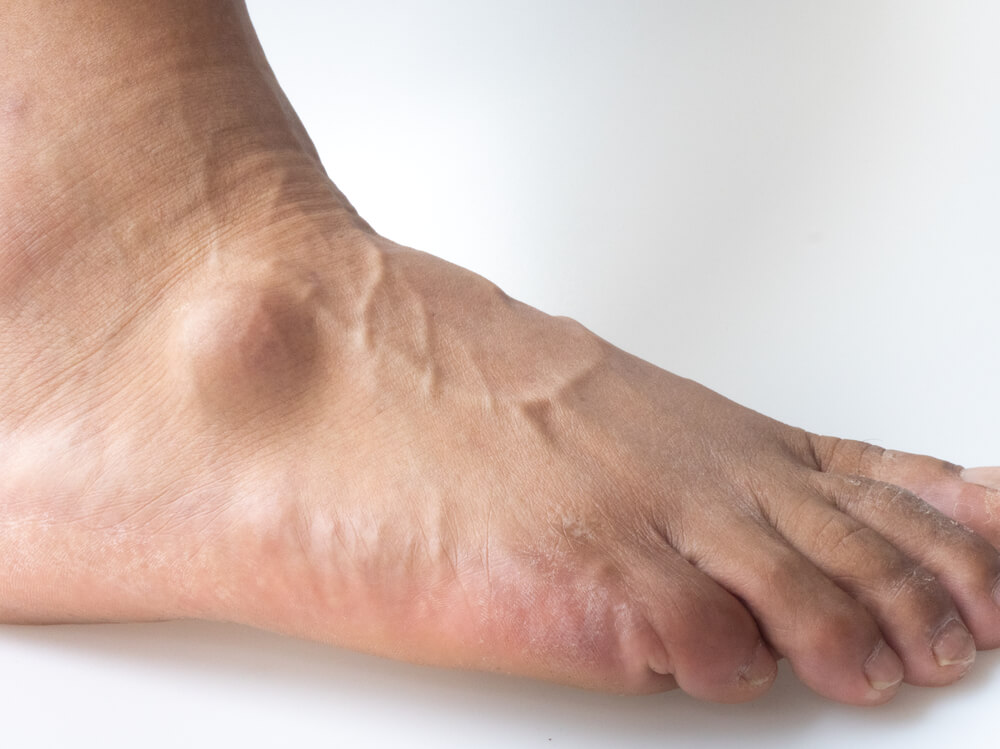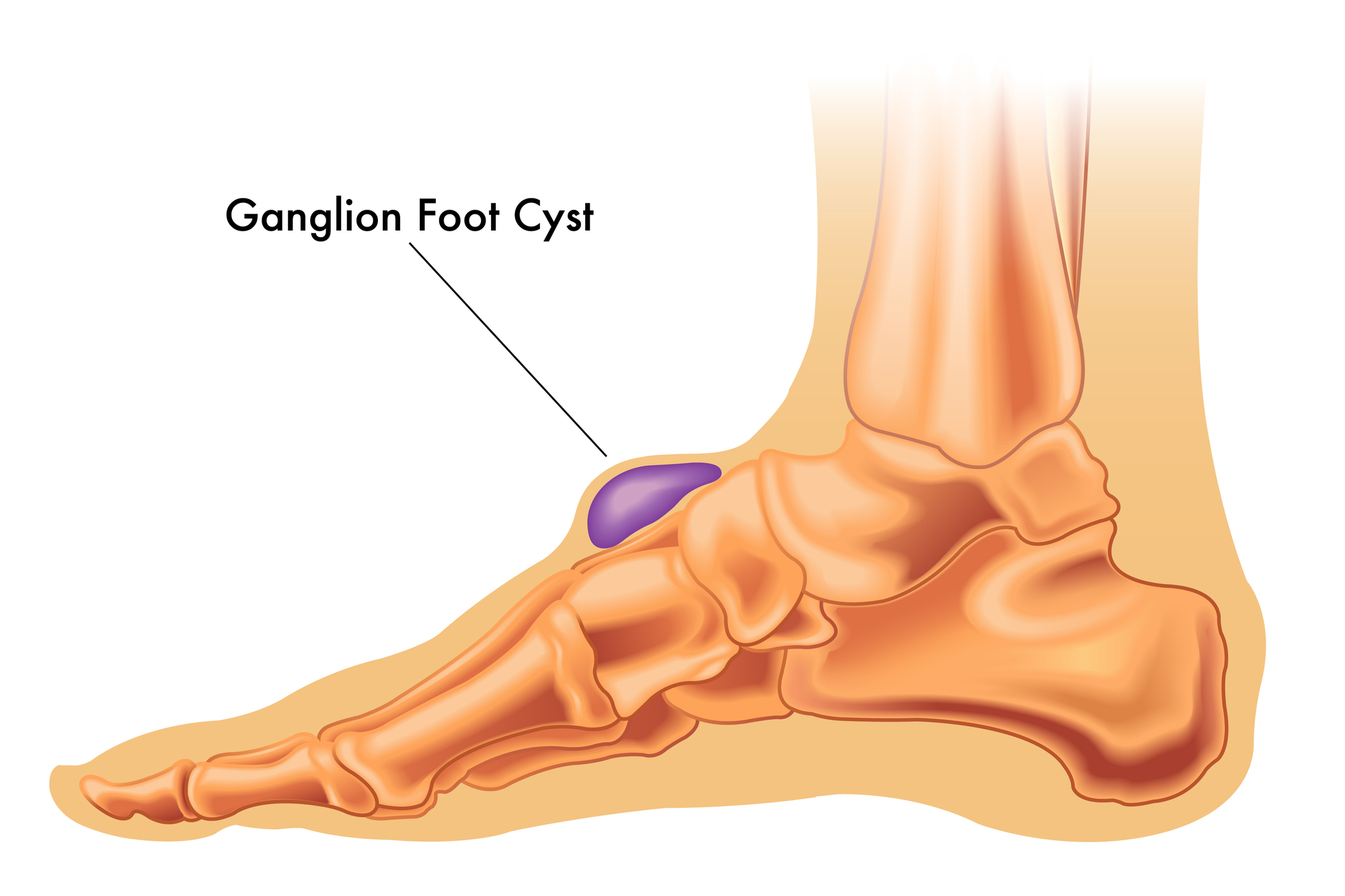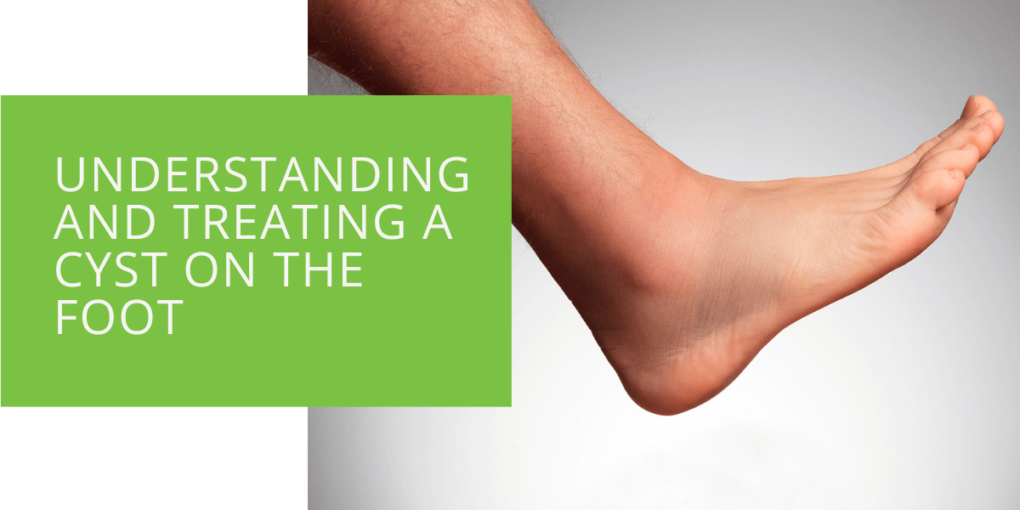Understanding and Treating a Cyst on the Foot
Cysts on the foot are small, round lumps filled with fluid that can occur anywhere on the foot or ankle. These non-cancerous growths can be uncomfortable and sometimes even painful, making it important to understand the different types of foot cysts and how to treat them. Podiatrists, also known as foot and ankle specialists, are trained to diagnose and treat cysts on the foot and can help you find relief.
What is a Cyst on the Foot?
A cyst is a fluid-filled sac that can form anywhere on the body, including the foot. There are several different types of foot cysts, including:
- Ganglion cysts: These cysts are most common on the top of the foot and are filled with a thick, clear, jelly-like fluid. Ganglion cysts are often caused by a joint or tendon injury and may accompany pain or swelling.
- Synovial cysts: These cysts form around a joint, such as the ankle, and are filled with a thin, clear fluid produced by the synovial membrane surrounding the joint. Synovial cysts may cause pain and swelling and are often a result of arthritis or other joint disorders.

Symptoms of a Foot Cyst
If you have a cyst on your foot, you may notice a small, round lump on the surface of your skin. The lump may be soft to the touch and accompanied by pain, swelling, or discomfort when walking or wearing shoes. Some cysts may also be visible as a bulge under the skin.
Causes of Foot Cysts
Several different factors can cause a cyst to form on the foot, including:
Injury or Trauma
An injury or trauma to the foot or ankle, such as a sprain or fracture, can develop a cyst. These cysts may result from damage to the joint, tendon, or other structures in the foot.
Infection
An infection in the foot or ankle can also lead to the development of a cyst. These cysts may be accompanied by other symptoms of infection, such as fever, redness, and swelling.
Genetics
In some cases, genetics may play a role in the development of foot cysts. If you have a family history of cysts on the foot, you may be more likely to develop one yourself.
Diagnosis of Foot Cysts
Your podiatrist will examine your foot and ask about your symptoms and medical history. They may also recommend imaging tests, such as an MRI or CT scan, to better look at the cyst and rule out other underlying conditions.

Treatment of Foot Cysts
Once your podiatrist has diagnosed your cyst, they will recommend a treatment plan based on the type and severity of the cyst. Treatment options for foot cysts may include:
Medications
Your podiatrist may prescribe medications, such as nonsteroidal anti-inflammatory drugs (NSAIDs), to reduce pain and swelling associated with the cyst.
Surgery
In some cases, surgery may be necessary to remove a foot cyst. This can be done through a small incision or aspiration, in which a needle drains the fluid from the cyst.
Home Remedies
In addition to medical treatment, a few home remedies help reduce the pain and discomfort of a foot cyst. These may include:
- Resting and elevating your foot: Taking a break from activities that put pressure on your foot and elevating it above heart level can help reduce swelling and pain.
- Applying ice: Placing an ice pack on your foot for 15-20 minutes can help reduce inflammation and numb the area.
- Wearing comfortable shoes: Wearing shoes that provide plenty of support and cushioning can help alleviate pressure on the cyst and prevent further irritation.
- Soaking your foot: Soaking your foot in warm water with Epsom salt can help reduce swelling and improve circulation.

Prevention and Coping with a Foot Cyst
While it's not always possible to prevent a foot cyst from forming, there are a few steps you can take to reduce your risk:
Preventing Foot Cysts
- Wear shoes that fit properly: Wearing shoes that are too tight or loose can increase your risk of developing a foot cyst. Make sure to wear shoes that fit well and provide ample support.
- Practice good foot hygiene: Keeping your feet clean and dry can help prevent infections that may lead to the development of a cyst.
- Avoid high-impact activities: Engaging in high-impact activities, such as running or jumping, can increase your risk of developing a foot cyst. If you participate in these activities, be sure to wear proper footwear and take regular breaks to give your feet a rest.
Coping with a Foot Cyst
If you have a foot cyst, it's important to follow your treatment plan and take steps to manage the pain and discomfort. This may include taking over-the-counter pain medications, applying ice to the affected area, and resting your foot whenever possible. It's also important to see your podiatrist regularly to monitor the cyst and ensure it's not getting worse.
Conclusion
If you have a cyst on your foot, it's important to see a podiatrist for a proper diagnosis and treatment plan. You can find relief and prevent the cyst from worsening with the right treatment. Remember to practice good foot hygiene and wear shoes that fit properly to reduce your risk of developing a foot cyst.
FAQ
How do I get rid of a cyst on my foot?
Treatment options for a cyst on the foot include medications, surgery, and home remedies. Your podiatrist will recommend a treatment plan based on the type and severity of your cyst. In some cases, surgery may be necessary to remove the cyst, while in other cases, home remedies such as resting and elevating the foot, applying ice, and wearing comfortable shoes may help alleviate pain and discomfort.
What causes a cyst to form on your foot?
Various factors, including injury or trauma to the foot or ankle, infection, and genetics can cause foot cysts.
What does a cyst look like on top of the foot?
A cyst on the top of the foot may appear as a small, round lump on the skin's surface. The lump may be soft to the touch and may be accompanied by pain, swelling, or discomfort when walking or wearing shoes. Some cysts may also be visible as a bulge under the skin.
Do cysts on foot go away?
Some foot cysts may go away on their own over time, while others may require treatment to resolve. It's important to see a podiatrist for a proper diagnosis and treatment plan to determine the best course for your cyst.

